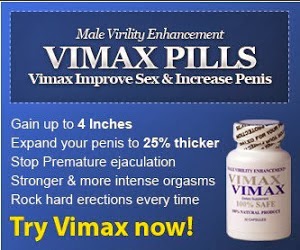There's never been a better time to take advantage of the expansive opportunities for online business development and growth that the internet affords.
Day by day, the internet shoppers will grow at an average rate of 5 to 10 percent per year through 2010, resulting in more online sales.
These positive growth should be music to the ears of any aspiring e-commerce entrepreneur. But there's more to building a thriving online business than getting your site up.
Here are some very important things you need to know :
Adapt Strategic Marketing for Sustainable Online Success
While online businesses are unique in many ways, your e-commerce site is merely a tool that you will use to help you achieve your personal and professional goals. Therefore, you should develop yours using the same sound, time-tested, and well-thought-out business methodologies that companies have used for generations. Yes, the internet is relatively new, but good business skills have been around for thousands of years.
Design and Navigation
Make your website dynamic and visitor-friendly. Your website's appearance and ease of navigation are a direct reflection of you, your company, and your products and can literally make or break your business. That's why it's vitally important that you do everything in your power to ensure that your website is welcoming and easy to read and use.
Dynamic Web Copy
Get People to Respond. Since you're building an e-commerce site that will offer exceptional products, you must be able to effectively converse with your prospects and customers and talk to them using language that is relevant and comfortable. That's why your first task is to candidly evaluate your own writing skills. Ask yourself where you fit, and be ruthlessly honest. The success of your website depends upon it. Even though your copy should be honest and simple it can still be exciting! Turn on your imagination and spice it up with controversy, anecdotes, colorful figures of speech, power words or phrases and powerful headlines.
Traffic Conversion
Increase sales and list building. Traffic conversion is a committed process for building relationships and rapport with your targeted audience; it helps visitors to know, like, and trust you. When done correctly, it provides the opportunity for online marketers to achieve their ultimate objective of acquiring and retaining loyal and profitable customers.
Since you can't improve what you don't measure you should be asking yourself :
How many visitors come to my website?
How many visitors opt in to my e-mail list?
How many people click on the buy buttons?
What is my visitor value?
In order to optimize your website so your prospects and customers will be compelled to opt in to your mailing list; learn more about your products and/or services and feel comfortable purchasing from you, you need to make your website professional looking, eye-catching and well-written. To improve opt-in conversions, use attention-grabbing graphics, make sure your opt-in box is positioned "above the fold," make an irresistible offer and include a privacy statement.
Automation
Increase e-commerce profits. In addition to being the most effective time-saving tools available, automation programs are an internet marketer's best friend, hands down. These software gems allow you to reap the benefits of work you've already completed, over and over again. Simply said, there are so many benefits to automation programs that if you're serious about growing and sustaining a profitable online business, you'd be foolish to ignore them.
Multimedia
Increase your impact using audio, video and conferencing. The benefits for including customer-centric multimedia elements on your website are so forceful and undeniable that failing to do so is a huge mistake. You'll receive many paybacks when you add audio and/or video elements to your e-commerce site. But before beginning, keep in mind that multimedia content has to be delivered in the way your audience wants it. It must be available 24 hours, on demand and two-way.
Web Audio
There are so many ways to use the web audio effectively. You can use audio to let your visitors hear recorded testimonials from happy customers, greet them warmly and enthusiastically, help alleviate and lingering doubts would-be customers may have by reassuring them that purchasing from you is essentially risk free and enhance e-courses.
Podcasts
Podcasting combines the ease of blogging with the fun of hosting your very own radio or TV show.
Web Video
Web videos afford you--or someone else--the opportunity to combine words, tone, body language, and facial expressions to convey meaningful information about you, your company, and your products and services. Let's face it; some of us should just not be in front of a camera for a variety of reasons. If you choose to avoid the camera, you can still do such things as :
Make someone else the star.
Do a voice-over narration.
Create a slide show.
Demonstrate a product or showcase a service.
Use Video to Increase Revenues : YouTube
Fueled by the Web's 2.0 social interaction concept and technological advances, novices and experts alike are adding their own videos to share ideas, entertain, demonstrate products, connect with others, and much more. And since access to the site is free and uploading a video is simple, it's a wonderful vehicle for practicing and honing your video skills.
Taking Your Video Viral
One of the most affordable (it's free!) and effective ways to materially increase your opt-in conversions is by taking your video viral--in other words, letting others help you spread the word to their friends, family members, associates, mailing lists, and so forth.
Video Blogging
Blogs are wonderful alternatives, or additions to, more traditional websites because they can be up and running quickly, usually in a matter of minutes; anyone can use their professional-looking templates without any prior design and/or navigation experience or expertise; they're inexpensive, dynamic, and fresh, and since new content is added regularly and often, the search engines love them.
Teleconferencing and Web Conferencing
Teleconferences and teleseminars represent wonderful, cost-effective alternatives to in-person meetings and classes. Additionally, they are :
Convenient.
They can be scheduled at the last minute and participants can call in from anywhere.
Efficient.
Important information can be delivered to groups of people effectively, affordably, and quickly.
Profitable.
You can sell your wisdom, knowledge, or advice by creating your own teleseminar,
Traffic Strategies
Get more visitors to your site. With a bit of typing and a simple click of a mouse, millions of people all over the world go to search engines (e.g., Google, MSN, Yahoo!, AOL, AskJeeves, Dogpile, etc.) to hunt for specific products, services, information and/or opportunities. And since the vast majority of online sales begin with search engines, they are an extremely valuable resource for any e-commerce business. People who are searching naturally assume that the sites listed first--particularly those on the first page--are the best, and that's where they click. The closer your site appears to the top of the list, the better.
Optimize Your Website
In order for search engines to find you (and deem you relevant) you'll need to include your most powerful keywords in various places on your website--your copy, headings, anchor and footer text, and alongside photos and graphics. Use unique page titles and meta tags, and focus on your most important keywords one at a time. Use search-friendly design and navigation techniques. Make sure it is easy for search engines (and more importantly, your visitors) to find their way from one of your web pages to any other via internal links. So, in addition to choosing the most relevant keywords you'll also want to make sure that you over deliver valuable content; your prospects will love you for it, and so will the search engines!
Web 2.0
It’s the key to using social media effectively. Web 2.0 is an online movement that encourages users to participate in the fresh, interactive nature of the internet by using widely available, less expensive, and more mature state-of-the-art technologies.
Some of the many ways you can use Web 2.0 technology and its people-oriented culture to enhance your online business include :
1.Getting products to market faster.
2.Reducing risk.
3.Obtain fast, real-time data on prospects and customers, trends, and products that will help you make more informed decisions.
4.Building and maintaining positive relationships.
5.Changing and adding content, test offers, and copy and obtain relevant information. 6.Use RSS syndication feeds to help you stay informed, become more efficient, and conduct testing.
7.Engaging in interactive conversations with the public.
8.Conducting real-time online video meetings.
9.Monitoring your word-of-mouth buzz.
10.Using "mashups" to create, update, or bundle products.
11.Attracting more targeted traffic to your website.
12.Using tags.
13.Getting information (and respond to it) the way you want.
Monday, March 24, 2008
Saturday, March 22, 2008
GETTING CUSTOMERS TO BUY MORE
If you're already selling anything online, you're about to discover a quick and easy way to get extra revenue from your site with very little added or in some cases zero expense !
There are three ways to grow your business:
1.Getting more customers
2.Increasing the transaction size (i.e., getting customers to pay more)
3.Increasing the frequency of purchases (i.e., getting customers to buy more often)
For some strange reason, virtually every business focuses solely on the first way. There isn't anything inherently wrong with that approach, but it's the most costly way to increase revenue and it usually means you're leaving the lion's share of the profits on the table.
To get the biggest bang for you buck, you need to incorporate the two other ways, starting with increasing your transaction size. This is the easiest way to boost your revenue.
The Upsell
Car dealers are excellent at using this technique. Once you've agreed to buy a car, you're given several "opportunities" to take advantage of dealer financing, extended warranties, rust coating, a LowJack security system, etc. These additions will normally add as much or more profit to the dealer as the original sale.
The technique is also used every time someone orders something at McDonald's. Who hasn't heard "want fries with that?" or "would you like that super-sized?" It may bump the cost of your meal by mere pennies but multiplied by "over a billion served," you'll see it makes serious dollars for the company.
And of course, anyone who has ever called a late-night infomercial has experienced this technique. When an order gets placed, the consumer will inevitably be offered a special deal on the third bottle of super-grime cleaner if they buy two bottles.
This technique of offering "add-ons" or "bumps" completes the art of the upsell. Without going into the psychological reasons about why this technique is so effective, the important thing to keep in mind is that it can on average boost profits by 20 to 66 percent simply by asking your own version of "want fries with that?"
This works even better and easier online.
Here are three ways to use the power of the upsell online.
1.Put an upsell right on your order page.
This is the easiest way to use upselling. It can be something as simple as putting a checkbox on your order forms and a sentence or two about an add-on like :
"Yes, please add an additional year of in-home repair for only $49" or
"Check here to add a bottle of miracle cleaner for only $17 more."
You can expect to get a 25 percent upsell rate on average. That means one out of every four customers will give you more money just for adding a few words onto your order form.
2. Use an intermediary page.
Once prospects click on the order button, they're taken to a new page. This page tells people about a special offer that is for "today only" and offers them a deluxe or gold version of whatever they intended to buy for "only X dollars more." You can make the upsell a big-dollar amount or a small insignificant little bump. Think of technique as the same thing as going in to buy a 99 cent burger and being offered a "value meal."
3. Recommend a product or service.
Anytime you buy something from Amazon, that's exactly what they do. Up comes a page that says: "Customers who bought X also bought Y," and they show a slew of products to choose from. How difficult would it be for you to look at your records, see if there are any patterns on past purchases, and then on your order form or intermediary page say: "Customers who bought this computer game also bought a special TV adapter and a 12 pack of batteries"?
Now you have to play fair and let people get the original price and package you offered, but there's no reason you shouldn't add a complementary upsell immediately. This method is one of the easiest--and most profitable--techniques you can start implementing right away. You simply need to come up with a couple of more compelling bonuses, packages or add-ons that people will get for the upgrade.
There is no reason you can't use more than one upsell. You can have a package offer on your intermediary page (your value meal) with an add-on on your order form (super-size), and also say something equivalent to: "Customers who bought our super-sized, value meal also bought a hot apple pie and a chocolate sundae."
There are three ways to grow your business:
1.Getting more customers
2.Increasing the transaction size (i.e., getting customers to pay more)
3.Increasing the frequency of purchases (i.e., getting customers to buy more often)
For some strange reason, virtually every business focuses solely on the first way. There isn't anything inherently wrong with that approach, but it's the most costly way to increase revenue and it usually means you're leaving the lion's share of the profits on the table.
To get the biggest bang for you buck, you need to incorporate the two other ways, starting with increasing your transaction size. This is the easiest way to boost your revenue.
The Upsell
Car dealers are excellent at using this technique. Once you've agreed to buy a car, you're given several "opportunities" to take advantage of dealer financing, extended warranties, rust coating, a LowJack security system, etc. These additions will normally add as much or more profit to the dealer as the original sale.
The technique is also used every time someone orders something at McDonald's. Who hasn't heard "want fries with that?" or "would you like that super-sized?" It may bump the cost of your meal by mere pennies but multiplied by "over a billion served," you'll see it makes serious dollars for the company.
And of course, anyone who has ever called a late-night infomercial has experienced this technique. When an order gets placed, the consumer will inevitably be offered a special deal on the third bottle of super-grime cleaner if they buy two bottles.
This technique of offering "add-ons" or "bumps" completes the art of the upsell. Without going into the psychological reasons about why this technique is so effective, the important thing to keep in mind is that it can on average boost profits by 20 to 66 percent simply by asking your own version of "want fries with that?"
This works even better and easier online.
Here are three ways to use the power of the upsell online.
1.Put an upsell right on your order page.
This is the easiest way to use upselling. It can be something as simple as putting a checkbox on your order forms and a sentence or two about an add-on like :
"Yes, please add an additional year of in-home repair for only $49" or
"Check here to add a bottle of miracle cleaner for only $17 more."
You can expect to get a 25 percent upsell rate on average. That means one out of every four customers will give you more money just for adding a few words onto your order form.
2. Use an intermediary page.
Once prospects click on the order button, they're taken to a new page. This page tells people about a special offer that is for "today only" and offers them a deluxe or gold version of whatever they intended to buy for "only X dollars more." You can make the upsell a big-dollar amount or a small insignificant little bump. Think of technique as the same thing as going in to buy a 99 cent burger and being offered a "value meal."
3. Recommend a product or service.
Anytime you buy something from Amazon, that's exactly what they do. Up comes a page that says: "Customers who bought X also bought Y," and they show a slew of products to choose from. How difficult would it be for you to look at your records, see if there are any patterns on past purchases, and then on your order form or intermediary page say: "Customers who bought this computer game also bought a special TV adapter and a 12 pack of batteries"?
Now you have to play fair and let people get the original price and package you offered, but there's no reason you shouldn't add a complementary upsell immediately. This method is one of the easiest--and most profitable--techniques you can start implementing right away. You simply need to come up with a couple of more compelling bonuses, packages or add-ons that people will get for the upgrade.
There is no reason you can't use more than one upsell. You can have a package offer on your intermediary page (your value meal) with an add-on on your order form (super-size), and also say something equivalent to: "Customers who bought our super-sized, value meal also bought a hot apple pie and a chocolate sundae."
Monday, March 17, 2008
E-BROCHURES
If your company has ever printed a brochure, you know the time and cost involved as well as the potential waste.
Many businesses spend hundreds or thousands of dollars on a brochure, only to have boxes of them cluttering their closets years later.
If this sounds familiar, you'll certainly appreciate the many benefits of e-brochures.
An e-brochure is pretty much what it sounds like a brochure that can be distributed, delivered and viewed via the internet. Like printed brochures, e-brochures feature photos, graphics, copy and your logo. However unlike printed brochures, e-brochures can be sent as e-mail attachments, incorporated on a website or burned onto a self-playing CD. There's no question that e-brochures represent a new and highly cost-effective way of branding.
While traditional, printed brochures remain the industry standard, and many customers still expect them, e-brochures are quickly gaining popularity due to these unique selling points :
Cost effectiveness
No more guessing numbers for your print run, then winding up with too few or too many brochures. The cost of an e-brochure is fixed, whether you send out one or one million of them. Fees are based on the number of pages and any extra "bells and whistles" like video or audio. What's more, digital distribution means you omit postage costs.
Interactivity
This can greatly boost the overall impact of your message by engaging your audience. Viewers can turn the interactive pages, view video or listen to audio with a simple click of their mouse. Better yet, they can immediately place orders or request more information by clicking on embedded links.
Customization options
E-brochures let you to target your messages to specific audiences, increasing the likelihood they'll buy from you. Such market segmentation is much harder with printed collateral.
Easy to update and edit
You can quickly and efficiently customize your message, target your market and adapt to changes in the marketplace without re-printing a single page. Nor do you need to reprint your brochure if your offerings or price points change. Updating your e-brochure "template" is a simple and affordable editing job.
Unlimited distribution
The ability to e-mail your brochure means you can immediately and affordably respond to requests for information from anyone at any time. In fact you can instantly send your brochure to prospects around the globe and create a viral effect--one potential customer can forward it to other potential customers, which in turn can forward it to more customers and so on, at no cost to you.
Access to additional information
Your audience can quickly browse through content, zoom in on items, and print pages, all from the convenience of their home or office. You can also include a homepage link for customers who want to learn more about your business.
Tracking
With traditional printed materials, it is extremely difficult to track your ROI. Not so with e-brochures. You can track how many times your e-brochure is downloaded as well as how many orders you received from its distribution.
Environmentally friendly
Obviously, no trees are involved in the creation of an e-brochure. You won't need any storage boxes to house extra brochures, either.
Makes your company look smart and innovative
Having an e-brochure gives the distinct impression that you're ahead of the curve and well-positioned for the future. Customers like to do business with savvy companies who literally think outside the box.
Many businesses spend hundreds or thousands of dollars on a brochure, only to have boxes of them cluttering their closets years later.
If this sounds familiar, you'll certainly appreciate the many benefits of e-brochures.
An e-brochure is pretty much what it sounds like a brochure that can be distributed, delivered and viewed via the internet. Like printed brochures, e-brochures feature photos, graphics, copy and your logo. However unlike printed brochures, e-brochures can be sent as e-mail attachments, incorporated on a website or burned onto a self-playing CD. There's no question that e-brochures represent a new and highly cost-effective way of branding.
While traditional, printed brochures remain the industry standard, and many customers still expect them, e-brochures are quickly gaining popularity due to these unique selling points :
Cost effectiveness
No more guessing numbers for your print run, then winding up with too few or too many brochures. The cost of an e-brochure is fixed, whether you send out one or one million of them. Fees are based on the number of pages and any extra "bells and whistles" like video or audio. What's more, digital distribution means you omit postage costs.
Interactivity
This can greatly boost the overall impact of your message by engaging your audience. Viewers can turn the interactive pages, view video or listen to audio with a simple click of their mouse. Better yet, they can immediately place orders or request more information by clicking on embedded links.
Customization options
E-brochures let you to target your messages to specific audiences, increasing the likelihood they'll buy from you. Such market segmentation is much harder with printed collateral.
Easy to update and edit
You can quickly and efficiently customize your message, target your market and adapt to changes in the marketplace without re-printing a single page. Nor do you need to reprint your brochure if your offerings or price points change. Updating your e-brochure "template" is a simple and affordable editing job.
Unlimited distribution
The ability to e-mail your brochure means you can immediately and affordably respond to requests for information from anyone at any time. In fact you can instantly send your brochure to prospects around the globe and create a viral effect--one potential customer can forward it to other potential customers, which in turn can forward it to more customers and so on, at no cost to you.
Access to additional information
Your audience can quickly browse through content, zoom in on items, and print pages, all from the convenience of their home or office. You can also include a homepage link for customers who want to learn more about your business.
Tracking
With traditional printed materials, it is extremely difficult to track your ROI. Not so with e-brochures. You can track how many times your e-brochure is downloaded as well as how many orders you received from its distribution.
Environmentally friendly
Obviously, no trees are involved in the creation of an e-brochure. You won't need any storage boxes to house extra brochures, either.
Makes your company look smart and innovative
Having an e-brochure gives the distinct impression that you're ahead of the curve and well-positioned for the future. Customers like to do business with savvy companies who literally think outside the box.
Saturday, March 15, 2008
EMAIL MARKETING - TIPS TO GET STARTED
Choose a reputable e-mail marketing service provider
Features to look for include affordable plans, a variety of easy-to-use templates for different kinds of e-mails, e-mail list management, a commitment to e-mail marketing standards and best practices, and access to support and helpful resources.
Collect e-mail addresses
Even if your mailing list is just a few friends and family members, that's enough to get started. Grow your list by collecting names during your regular course of business, whether it's at a home product party or a chamber of commerce event.
Get permission
Before you send anyone a commercial e-mail marketing communication, remember to get permission. Permission is perishable, so don't wait months to e-mail someone after you get their contact info. And you must offer a way for recipients to unsubscribe or opt out of your mailings.
Make your first mailing count
This could be a simple announcement that you're open for business or an e-mail that welcomes people who recently joined your list. Thank recipients for joining and tell them who you are, what you offer and why you're e-mailing them. Your first e-mail is your opportunity to make a good impression and show the benefits of being on your e-mail list. Include a "forward to a friend" link so people can easily share your correspondence with others who might be interested in what you offer.
Create a schedule
Plan to communicate with customers via e-mail at least six times a year. Once a month is even better. If you plan to e-mail more often--and you may if you run events or weekly specials--make sure you are providing information your contacts value.
Customers and prospects might not need your products or services at the moment they receive your e-mail, but the key is to keep your business on their minds. That way, when they're ready to buy--or when they hear of someone who needs your products or services--they'll think of you.
Even if e-mail marketing is the only marketing activity you do, it can help you connect with customers and encourage referrals and repeat business. You don't even need to have a website to get started. As long as you have a computer in your home office (kitchen or garage), e-mail marketing is a great way to grow your home based business.
Features to look for include affordable plans, a variety of easy-to-use templates for different kinds of e-mails, e-mail list management, a commitment to e-mail marketing standards and best practices, and access to support and helpful resources.
Collect e-mail addresses
Even if your mailing list is just a few friends and family members, that's enough to get started. Grow your list by collecting names during your regular course of business, whether it's at a home product party or a chamber of commerce event.
Get permission
Before you send anyone a commercial e-mail marketing communication, remember to get permission. Permission is perishable, so don't wait months to e-mail someone after you get their contact info. And you must offer a way for recipients to unsubscribe or opt out of your mailings.
Make your first mailing count
This could be a simple announcement that you're open for business or an e-mail that welcomes people who recently joined your list. Thank recipients for joining and tell them who you are, what you offer and why you're e-mailing them. Your first e-mail is your opportunity to make a good impression and show the benefits of being on your e-mail list. Include a "forward to a friend" link so people can easily share your correspondence with others who might be interested in what you offer.
Create a schedule
Plan to communicate with customers via e-mail at least six times a year. Once a month is even better. If you plan to e-mail more often--and you may if you run events or weekly specials--make sure you are providing information your contacts value.
Customers and prospects might not need your products or services at the moment they receive your e-mail, but the key is to keep your business on their minds. That way, when they're ready to buy--or when they hear of someone who needs your products or services--they'll think of you.
Even if e-mail marketing is the only marketing activity you do, it can help you connect with customers and encourage referrals and repeat business. You don't even need to have a website to get started. As long as you have a computer in your home office (kitchen or garage), e-mail marketing is a great way to grow your home based business.
Friday, March 14, 2008
PROMOTING HOME BASED BUSINESS
Millions of people are living their entrepreneurial dreams by running a business from home.
Many entrepreneurs start with an idea to sell a product or service, working part-time out of a home office, kitchen or garage. Some leave the corporate world to become independent consultants, offering their skills to companies on a per-project basis.
Whatever your skills or passions, the rewards to owning a home based business are undeniable. Be your own boss, make your own hours, enjoy more time with family, earn income doing something you've always wanted to do; you're free from the constraints of a traditional work environment. The flip side is that there's no marketing or sales department to bring in business and keep it coming. You are it.
If you're running a home based business, chances are your resources are limited. Your challenge is to get business and keep it coming. That's where e-mail marketing can help without breaking the bank.
E-mail marketing is a fast and easy way to do the following :
Reach out to your contacts directly and let them know you are open for business
Encourage repeat and referral sales by reminding customers you're there
Share your expertise so customers turn to you as a trusted resource
Create promotions that boost business and keep your brand alive
Conduct effective DIY marketing on a cost-conscious budget
E-mail marketing works for any kind of home based business, whether you're a jewelry maker or a dog groomer, a freelance accountant or an online seller of collectibles. Let's look at two types of e-mail marketing that can build your home business.
Create an e-newsletter
A simple e-mail newsletter lets you share free advice, insights, and success stories with current (and potential) customers. This sets you up as a trusted expert in the eyes of the people on your list. When they need what you offer, your e-newsletter will help make sure that you come to mind. Come up with a few content ideas for your newsletter, such as design tips, recipes or financial insights, and ask people in your network what they'd like to read about. Customers, associates, friends and family are a great source of topic ideas. Worried about doing a lot of writing? Don't be. Newsletters can be short with just a few paragraphs of useful information.
Send promotional e-mails
Combine your newsletter's informational content with promotions that stimulate demand for your products or services. If you're in a gift-oriented or other retail business, the holidays create natural opportunities for promotions. If you're a consultant offering services, your business may be more cyclical or seasonal depending on clients' needs. You can also plan an event or a sale to create a business booster during otherwise slow times. A 10 percent off coupon, open house, or a free sample or consultation are examples of popular e-mail promotions.
Many entrepreneurs start with an idea to sell a product or service, working part-time out of a home office, kitchen or garage. Some leave the corporate world to become independent consultants, offering their skills to companies on a per-project basis.
Whatever your skills or passions, the rewards to owning a home based business are undeniable. Be your own boss, make your own hours, enjoy more time with family, earn income doing something you've always wanted to do; you're free from the constraints of a traditional work environment. The flip side is that there's no marketing or sales department to bring in business and keep it coming. You are it.
If you're running a home based business, chances are your resources are limited. Your challenge is to get business and keep it coming. That's where e-mail marketing can help without breaking the bank.
E-mail marketing is a fast and easy way to do the following :
Reach out to your contacts directly and let them know you are open for business
Encourage repeat and referral sales by reminding customers you're there
Share your expertise so customers turn to you as a trusted resource
Create promotions that boost business and keep your brand alive
Conduct effective DIY marketing on a cost-conscious budget
E-mail marketing works for any kind of home based business, whether you're a jewelry maker or a dog groomer, a freelance accountant or an online seller of collectibles. Let's look at two types of e-mail marketing that can build your home business.
Create an e-newsletter
A simple e-mail newsletter lets you share free advice, insights, and success stories with current (and potential) customers. This sets you up as a trusted expert in the eyes of the people on your list. When they need what you offer, your e-newsletter will help make sure that you come to mind. Come up with a few content ideas for your newsletter, such as design tips, recipes or financial insights, and ask people in your network what they'd like to read about. Customers, associates, friends and family are a great source of topic ideas. Worried about doing a lot of writing? Don't be. Newsletters can be short with just a few paragraphs of useful information.
Send promotional e-mails
Combine your newsletter's informational content with promotions that stimulate demand for your products or services. If you're in a gift-oriented or other retail business, the holidays create natural opportunities for promotions. If you're a consultant offering services, your business may be more cyclical or seasonal depending on clients' needs. You can also plan an event or a sale to create a business booster during otherwise slow times. A 10 percent off coupon, open house, or a free sample or consultation are examples of popular e-mail promotions.
Tuesday, March 4, 2008
ATTRACTING CUSTOMERS TO YOUR SITE
Now, more than ever, website owners are looking for ways to expand their businesses and are building strategies for more quality content build-outs and added distribution channels.
Their goal is to attract more eyeballs than ever before.
In today's competitive marketplace, how can you find additional ways to grow and build a loyal visitor base online?
If you're planning to launch a small website, you must have found a niche marketplace with much less competition. Otherwise, you may not rank where searchers can find you. You know that adding content and links are important, but if your competition is doing more, how can you keep up? You can't continue to create, modify and copy pages and fiddle with HTML editor programs; you're too busy for that.
Here are some smart ways of doing it …..
Join the blogosphere.
Distribution via blog networks is smart. But, if you have a regular, static website, you may experience technical or HTML page issues in making your site available to search engines. Imagine that you've written a "Top 10 Tips" article on how to grow large, custom red tomatoes in your garden. The text provides excellent and useful information, but it's not optimized well for search engines. If search engines can't spider your site and find you easily, how can you get your information distributed? How can you target and continue to feed a hungry market?
RSS.
As defined by Wikipedia, RSS is a "family of web feed formats used to publish frequently updated content such as blog entries, news headlines or podcasts." You may also see references to Media RSS, designed in 2004 by Yahoo!, but it's not as commonly known. You should use this for video and media.
The technology behind RSS isn't new, but with the rise of social media and social media optimization, failing to leverage this content marketing avenue could leave you behind. You don't need to worry about the technical aspects of RSS feeds, but they're XML representations that custom readers--known as feed readers--can consume for easy scan and reading by your audience. Blogs, RSS and social media will see a huge popularity uptick in 2008. As Stoney DeGeyter, a prolific search marketer, noted, "Content is dead, community is king."
Web Traffic RSS Success Tips
Get a blog and start writing.
Start by posting one or two times a week and increase the frequency from there. Make sure readers can easily bookmark your posts with action clicks, easily installable via plug-ins (WordPress is a favorite here). You don't have to write everything yourself. It can be outsourced, and you can write commentaries on news stories and public domain articles to get started.
Provide a visible RSS icon.
Placing a large RSS icon on your site will let visitors know they can get your content into their readers and can sign up easily and quickly.
Publish feeds.
Big names like The New York Times, BBC, MSNBC and Amazon are already doing it. iTunes has read capability into media streams of audio and video. You're not limited by text anymore. Creating videos for your online marketing is big this year. If you have information to share, any "how to" and "problem solver" videos are always in demand.
Get a reader.
An RSS reader comes in different variations--free or paid, desktop or browser-based. Readers allow you to scan headlines and stay up-to-date on content with a high data freshness rate. The following readers are worth considering :
Bloglines
Google Reader
Yahoo! Web
FeedDemon
Pluck
Set alerts.
Set alerts for your blog name or URL. Use Google.com/alerts and track events as they happen. You can set up weekly and daily alerts. Get a free account at FeedBurner.com and track and set up feeds, and run daily reports, stats and more. It's a very handy tool and contains many useful features and excellent reporting on your subscriptions, including search terms and incoming pages.
If you apply these techniques, you may see a potentially large rise in traffic on your site, including willing customers who are ready to buy what you have to offer. Get involved and let the RSS feeds push content out to your customers and readers, and use compelling headlines to draw the readers in.
Their goal is to attract more eyeballs than ever before.
In today's competitive marketplace, how can you find additional ways to grow and build a loyal visitor base online?
If you're planning to launch a small website, you must have found a niche marketplace with much less competition. Otherwise, you may not rank where searchers can find you. You know that adding content and links are important, but if your competition is doing more, how can you keep up? You can't continue to create, modify and copy pages and fiddle with HTML editor programs; you're too busy for that.
Here are some smart ways of doing it …..
Join the blogosphere.
Distribution via blog networks is smart. But, if you have a regular, static website, you may experience technical or HTML page issues in making your site available to search engines. Imagine that you've written a "Top 10 Tips" article on how to grow large, custom red tomatoes in your garden. The text provides excellent and useful information, but it's not optimized well for search engines. If search engines can't spider your site and find you easily, how can you get your information distributed? How can you target and continue to feed a hungry market?
RSS.
As defined by Wikipedia, RSS is a "family of web feed formats used to publish frequently updated content such as blog entries, news headlines or podcasts." You may also see references to Media RSS, designed in 2004 by Yahoo!, but it's not as commonly known. You should use this for video and media.
The technology behind RSS isn't new, but with the rise of social media and social media optimization, failing to leverage this content marketing avenue could leave you behind. You don't need to worry about the technical aspects of RSS feeds, but they're XML representations that custom readers--known as feed readers--can consume for easy scan and reading by your audience. Blogs, RSS and social media will see a huge popularity uptick in 2008. As Stoney DeGeyter, a prolific search marketer, noted, "Content is dead, community is king."
Web Traffic RSS Success Tips
Get a blog and start writing.
Start by posting one or two times a week and increase the frequency from there. Make sure readers can easily bookmark your posts with action clicks, easily installable via plug-ins (WordPress is a favorite here). You don't have to write everything yourself. It can be outsourced, and you can write commentaries on news stories and public domain articles to get started.
Provide a visible RSS icon.
Placing a large RSS icon on your site will let visitors know they can get your content into their readers and can sign up easily and quickly.
Publish feeds.
Big names like The New York Times, BBC, MSNBC and Amazon are already doing it. iTunes has read capability into media streams of audio and video. You're not limited by text anymore. Creating videos for your online marketing is big this year. If you have information to share, any "how to" and "problem solver" videos are always in demand.
Get a reader.
An RSS reader comes in different variations--free or paid, desktop or browser-based. Readers allow you to scan headlines and stay up-to-date on content with a high data freshness rate. The following readers are worth considering :
Bloglines
Google Reader
Yahoo! Web
FeedDemon
Pluck
Set alerts.
Set alerts for your blog name or URL. Use Google.com/alerts and track events as they happen. You can set up weekly and daily alerts. Get a free account at FeedBurner.com and track and set up feeds, and run daily reports, stats and more. It's a very handy tool and contains many useful features and excellent reporting on your subscriptions, including search terms and incoming pages.
If you apply these techniques, you may see a potentially large rise in traffic on your site, including willing customers who are ready to buy what you have to offer. Get involved and let the RSS feeds push content out to your customers and readers, and use compelling headlines to draw the readers in.
Subscribe to:
Posts (Atom)












































































































